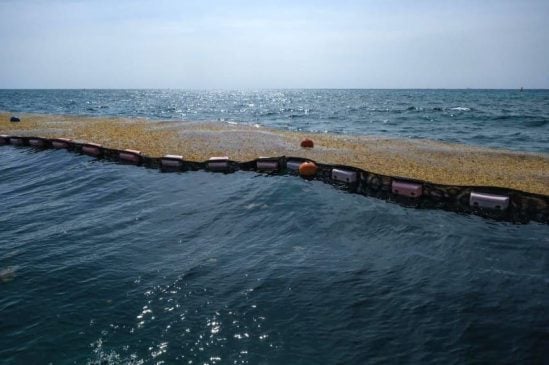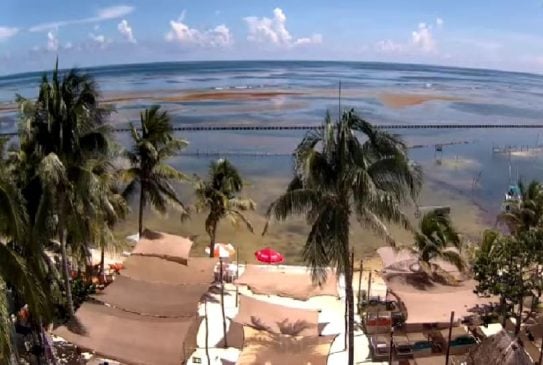Riviera Maya, Q.R. — A cleanup crew spent their Saturday waist deep in water collecting tons of sargassum. The crew were clearing the seaweed from the public beach areas off the coast of Mahahual in Costa Maya.

“My heartfelt thanks for the combined efforts and commitment of everyone who joined in another day of beach cleanups and sargassum collection in our beautiful community of Mahahual,” said Mayor Yensunni Martínez Hernández regarding the Saturday beach clean.

It was the second mass sargassum cleanup in Mahahual during the month of May where nearly 100 tons was removed.
“I am grateful for the invaluable support (…) because together we make a great team, and only together can we continue the transformation of Mahahual and all of Othón P. Blanco,” she said.

At the start of the weekend, Marina crews were also out removing sargassum from the sea. Specially designed sargassum vessels were developed by Mexico’s Navy several years ago that have increased in numbers. Those vessels are deployed along the coast during sargassum season.

On Saturday, Marina personnel were seen sweeping the floating seaweed from the sea as it gathered on the opposite side of a barrier. The vessel was deployed off the coast of Puerto Morelos May 31 to gather the collected sargassum that was unable to reach shore.

After a mass arrival of sargassum along the coast of Playa del Carmen, crews spent days removing the washed up seaweed. More than 100 people lined the beaches where the sargassum was forked into wheelbarrows then into waiting dump trucks.

While the city’s beaches took a hit, it was only a matter of days before the Riviera Maya sand was visible again. On May 20, the coast of Playa del Carmen was hit hard by a mass arrival of sargassum. Samantha Álvarez, head of PDC Sustainable Environment said a team of 101 people worked daily to clear the beaches.

“The work was carried out in two shifts from 6:00 a.m. to 3:00 p.m. and from 9:00 a.m. to 5:00 p.m.,” she said. Personnel working to clear the water and sand reported moving more than 200 tons a day. To clear the beaches, Álvarez said seven backhoes were used for the expedited collection of accumulated sargassum.

Due to their strategic location, other beaches such as Isla Mujeres and Holbox are rarely effected by the sargassum. Each year, only major storms push displaced seaweed onto their shores. So far this season, both beaches have remained clear and free of the seaweed that has hit other coastal areas hard.

The southern regions of Quintana Roo have seen the most seaweed this year. While the far south in Xcalak and Mahahual in Costa Maya have seen repeated mass landfalls, beaches further north have not. The beaches of Tulum have experienced a moderate arrival so far this season.

This year, forecasters have predicted a heavy sargassum season for the Atlantic. The National Hurricane Centre (NOAA) says countries in the Great Atlantic Sargassum Belt are affected most by the masses of floating seaweed each year with April and May being the most heavy.
The affected countries include Mexico, the Bahamas, Jamaica, Dominican Republic, Brazil and Trinidad & Tobago. The sargassum also affects the east coast of Florida including the Florida Keys.


